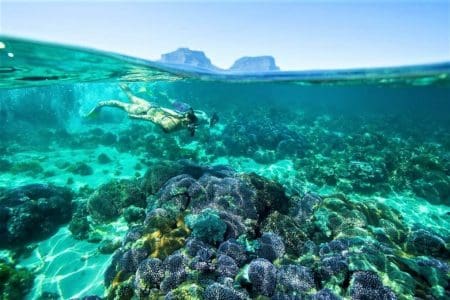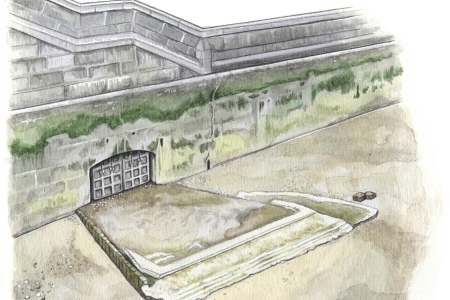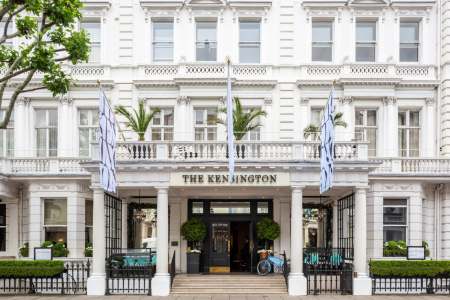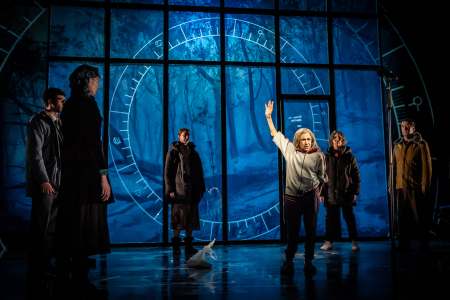Roger Hermiston and Eileen Wise review Monkey Island hotel and Estate on the banks of the Thames near the village of Bray.
It is just a small, seven-acre island in the Thames but it packs a historical punch. King Edward VII and Queen Alexandra loved to come and take afternoon tea on its lawn under the shade of a walnut tree. Edward Elgar was inspired to write his First Symphony Violin Concerto in a fine house on its bank. Rebecca West, a leading literary light of the early 20th century, set her first novel here and wrote of its ‘magical state’.
We’re talking about the fish-shaped Monkey Island, a sliver of land downriver of the village of Bray in Berkshire, six miles from Windsor, forty miles from London and just off the M4 (although once ensconced in its tranquil surroundings, you would never know it).
Why ‘Monkey’ Island?
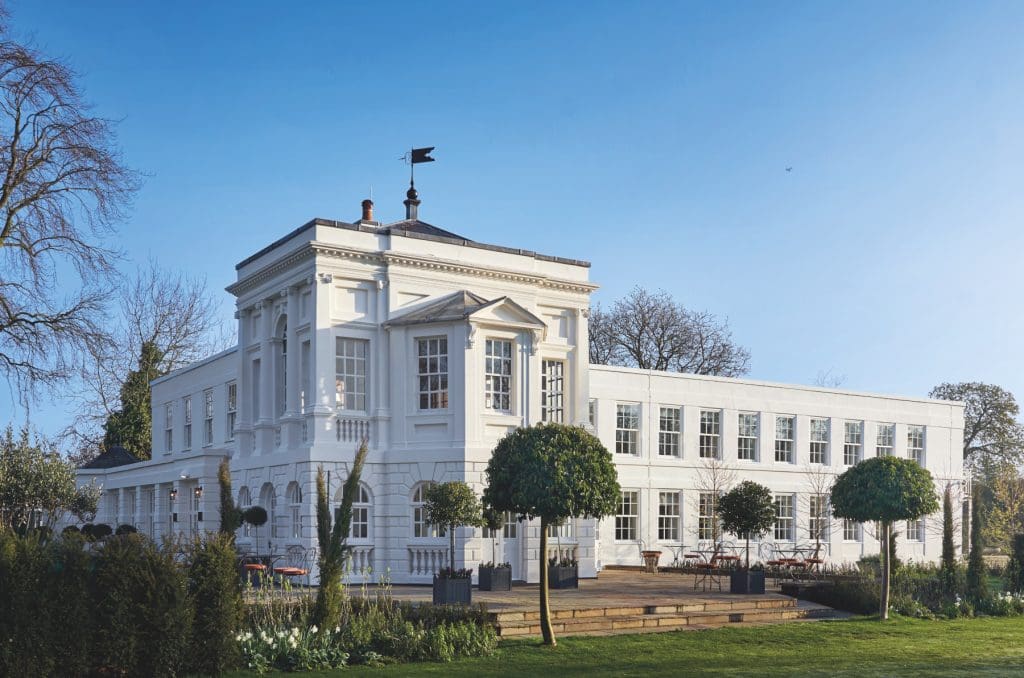
One theory is that it was named thus after another royal, King George III, who is supposed to have spent time here accompanied by his pet monkey. That’s probably a little fanciful, so the best bet is that it takes its name from monks in the 12th century, attached to nearby Merton Priory, who settled here and built fishponds close to the island.
Charles Spencer, the 3rd Duke of Marlborough (a direct relation of Winston Churchill) bought Monkey Island in 1723 as a fishing retreat, and for a couple of centuries he and subsequent owners would bring their well-known society friends – politicians, writers, musicians, artists – for rest and relaxation in the two splendid Palladian Grade I listed buildings, Temple and Pavilion, the Duke originally had built here.
In the mid 19th-century the Pavilion became a riverside inn, and by the end of it was commonly known as the ‘Monkey Hall Hotel’. In the 20th century the island went through several owners, its fortunes waxing and waning, before in 2017 the Malaysian-based YTL Hotels group acquired it and various houses associated with it, and invested heavily to bring it back to its former glory.
Monkey Island Hotel
We arrived for our visit on a beautiful spring afternoon, a welcome relief after days of persistent downpours. We checked in at reception – once a boathouse – on the mainland, greeted at the desk by a monkey sculpture, the first of many motifs of the animal scattered around the public rooms of the estate.
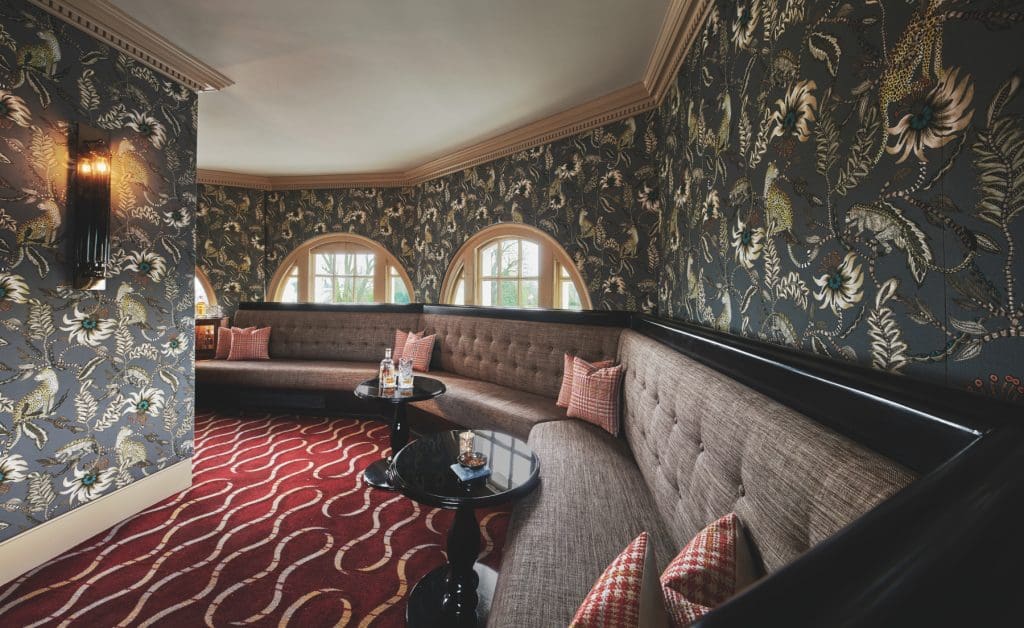
A short walk over the footbridge – built in 1956 – and we were on the island, where almost our first sight was a large bronze statue of a bespectacled man in suit and tie, relaxing in an armchair, gazing beyond the river into the Berkshire countryside beyond. This was erected in memory of Tan Sri Dato Seri (Dr) Yeoh Tiong Lay, former founder and chairman of the YTL Corporation, for whom Monkey Island’s restoration was clearly a labour of love, but who unfortunately died before it reopened in 2019.
We headed for our room across beautifully kept lawns, flanked by colourful flowerbeds and shaded by chestnut, lime and walnut trees, before spotting – what else – a monkey puzzle tree in the middle of the lawn. It’s interesting to reflect that although native to South America, this tree was actually first introduced to Britain way back in 1795 by plant collector Archibald Menzies, who planted two seedlings at Kew, grown from large pine nuts he had been served as dessert by the Governor of Chile.
Most of the forty rooms and suites are located in the white, classical Temple building. We admired photographs of famous visitors – including a somewhat stern looking Edward VII and family, and a youthful looking Elgar – in the hallway before climbing the stairs to the Wedgewood Suite, our home for the night.
Wedgewood Suite
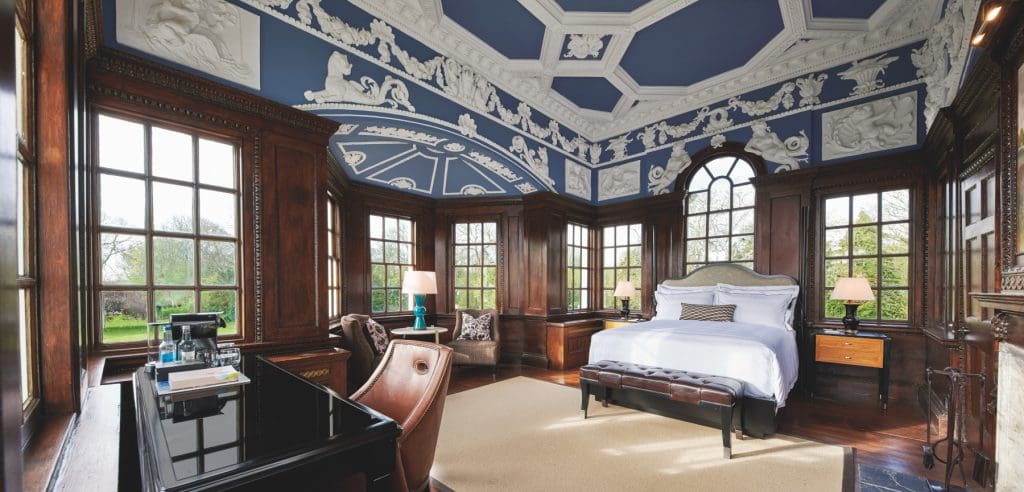
This was a stunning looking room, the grand, dark wood-panelling all around the walls in contrast with the gorgeous Wedgewood blue and white plasterwork ceiling, with figures of Neptune, mermaids, dolphins and shells carved intricately into it. Above the mantelpiece there’s a portrait of the 3rd Duke of Marlborough, silver-topped cane in hand, with an Arcadian-looking Monkey Island scene, Temple, Lodge and river, in the background.
The light-filled room has splendid all-round views of the garden and the river – and the monkey puzzle tree. The Queen-sized bed was most comfortable, as were the two armchairs in the window. Accompanying the bedroom was a spacious dressing-room, and marbled bathroom complete with walk-in shower and roll-top bath. All in all, a room of style and comfort.
Monkey Island Estate
On many weekends in the summer the Monkey Island Estate is the perfect venue for wedding parties. In addition to the rooms in the Temple buildings, across the footbridge on the mainland there are three luxurious cottages for hire – Long White Cloud (formerly known as ‘The Hut’, Elgar’s home from home, and once the actual home of racing driver Stirling Moss), Brook House, and Sundial Cottage. Opposite these houses are eleven more Barn rooms, all with a country house feel.
We were there on a tranquil, sunny Monday, so we just settled down on a bench on the river bank and watched the occasional pleasure boat go by, while keeping our eyes out for the flight of a kingfisher or a heron. We also had to keep a close watch on a pair of Canada geese, aggressively warding off anyone or anything that got too close to their little ones.
Monkey Island Spa
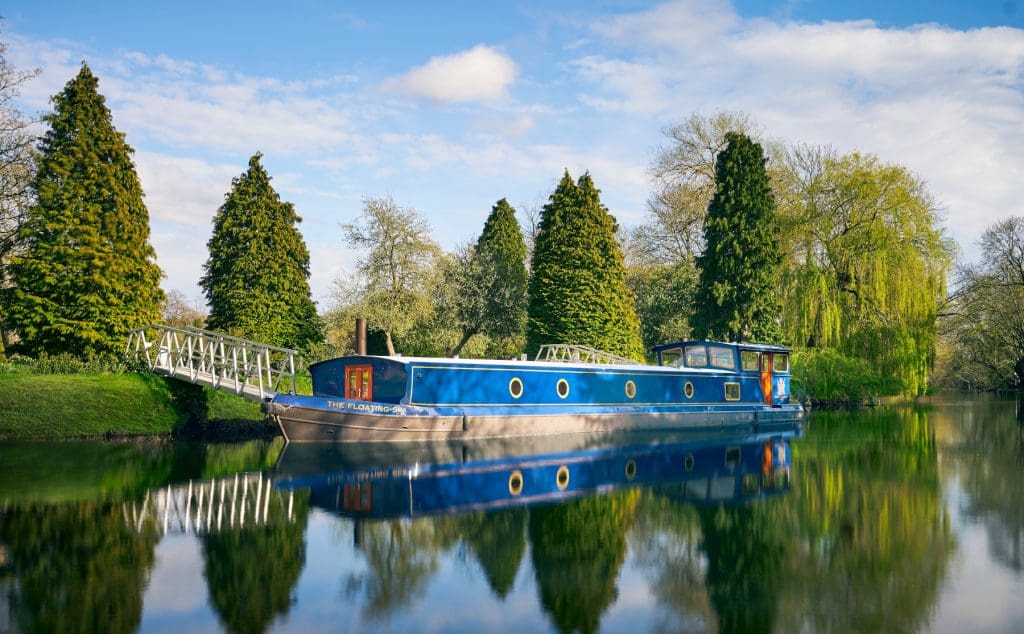
Monkey Island has a spa – but it is floating, as regulations forbid any more buildings on the land. While I relaxed in the Wedgewood Suite, immersing myself in Andrew O’Hagan’s Dickensian-style novel Caledonian Road, Eileen took to the royal blue barge for some ministration from chief masseuse Beverley.
Appropriately, this floating vessel was once moored at the Chelsea Physic Garden – where visitors once traded exotic plants, powders and plants. The treatments include the signature Floating Massage, a full-body stretch and pounding, performed on a water bed. But the Monks’ Elixir, a full-body massage was a memorable cleansing, relaxing and de-stiffening experience.
Dining at the Pavilion
For dinner, it was the short walk over to the Pavilion, which houses the Monkey Room with its beautifully restored 17th century frescoes, the expansive Monkey Bar with its enticing array of bespoke cocktails, and, up a steep small staircase, the Whisky Snug where 28 types of the golden liquid are available.
Here also is the elegant blue and yellow Brasserie, where we settled down at a table close to the open-kitchen with a lovely view of the River Thames through the long French windows (it wasn’t quite warm enough to sit out on the terrace). We chose pea soup and Monkey Island cured salmon for starters, and fish and chips and hake with fennel and new potatoes for mains, all washed down with a bottle of dry white wine chosen from an intriguing list. Everything was more than satisfactory and the service here – as on all other parts of the estate – was exemplary.
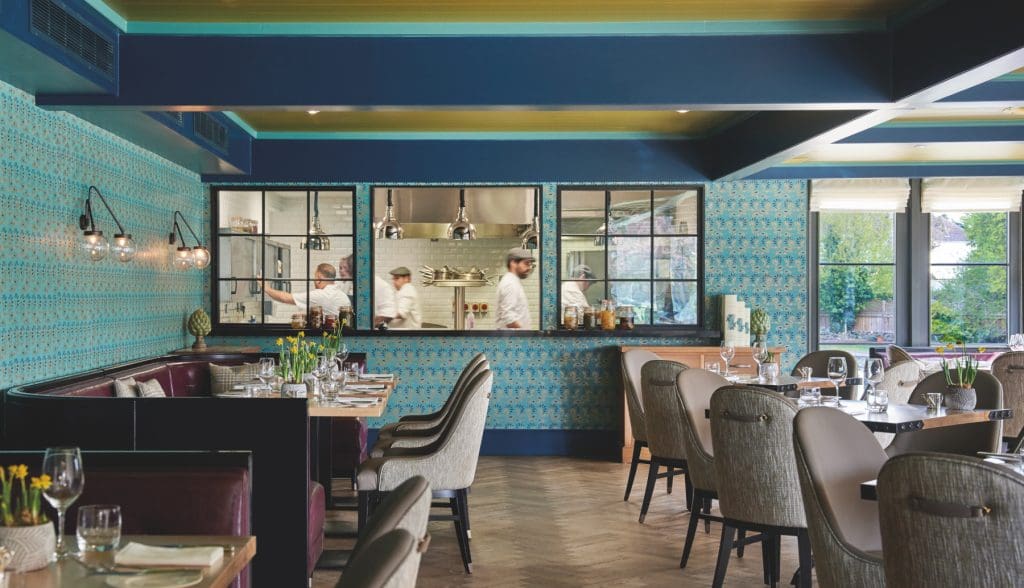
Visiting the Village of Bray
The village of Bray, just a short walk from Monkey Island, is of course a magnet for foodies, with not just one but three world-class, Michelin-starred restaurants – Heston Blumenthal’s Fat Duck (three stars), the Roux family’s Waterside Inn (also three) and the Hind’s Head and Crown (one). The last named was often used for entertaining the Queen and Prince Philip in the 1960s, and once memorably hosted lunch for the Queen’s cousin, Princess Alexandra the day before her wedding.
A stroll round Bray revealed a quintessentially pretty little Home Counties village. The impressive St Michael’s Church dates back to the 13th century, with a very well-kept graveyard. There’s a village hall, a friendly café where we took lunch, and another excellent gastropub, The Crown, which has been an inn since the 16th century. Houses along the High Street all have names like ‘Plum Cottage’ and the whole place has an air of timeless charm. Nothing much seems to disturb the calm, except perhaps for the excited foodies arriving in the evening for their gastronomic treats.
‘So they went to Monkey Island, the utter difference of which was a healing, and settled down happily in its green silence’, wrote Rebecca West in The Return of the Soldier in 1928. Nearly a century on and that pastoral beauty and tranquillity remains.
Monkey Island Bray
For more details on Monkey Island Estate click here.
All images courtesy of Monkey Island Estate.
